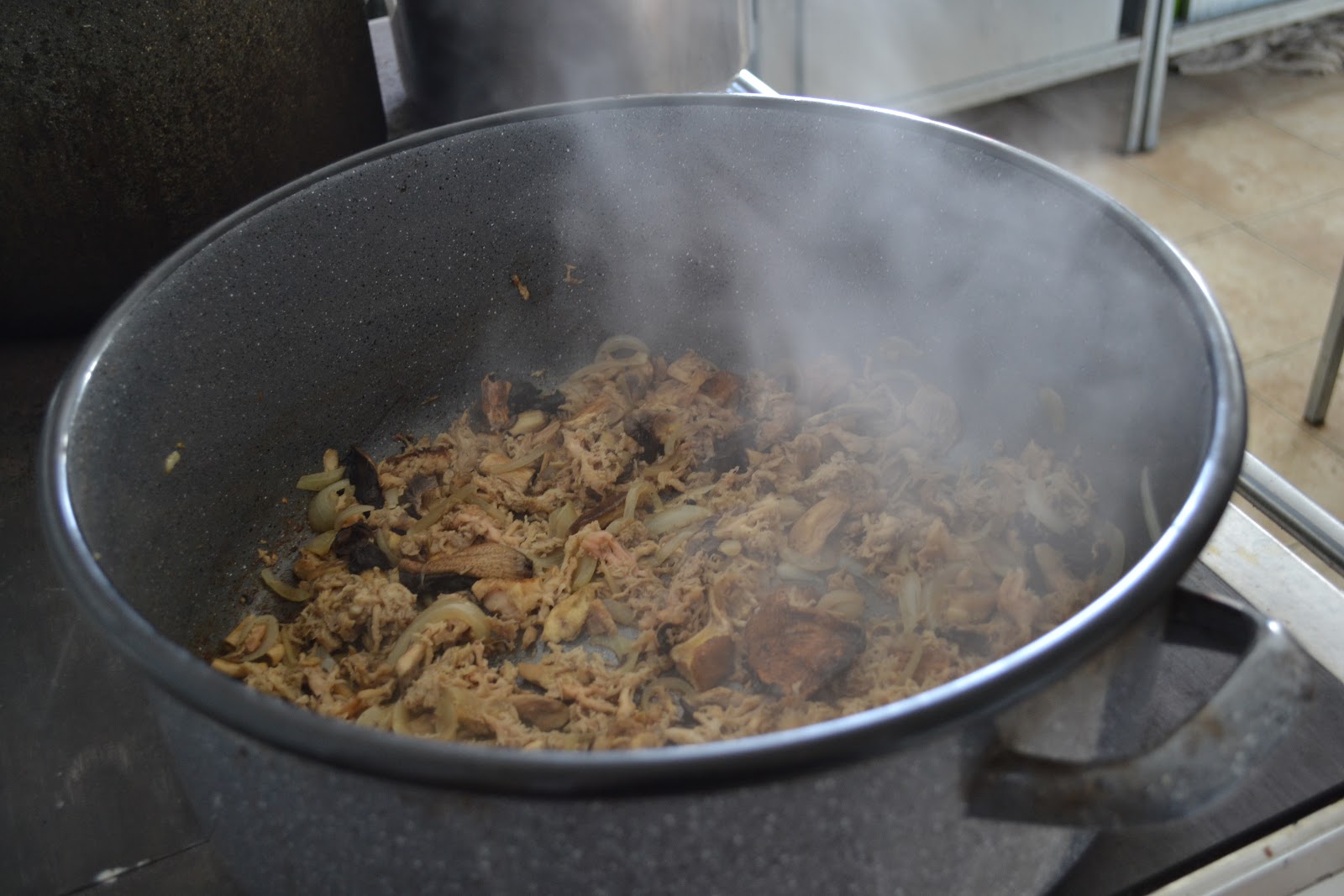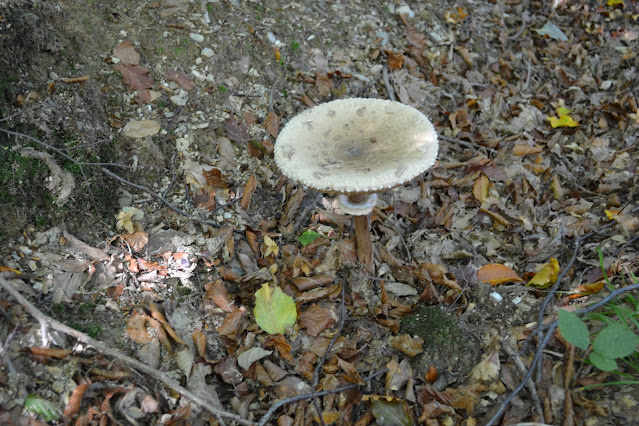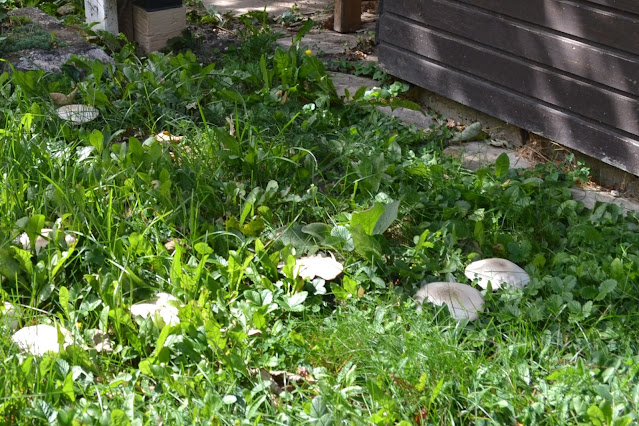And God said, Behold, I have given you every herb bearing seed, which is upon the face of all the earth, and every tree, in the which is the fruit of a tree yielding seed; to you it shall be for meat. - Genesis 1:29
The greatest of
virtues is prayer; the foundation of prayer is fasting. – St Ignatius
Brianchaninov, Collected Works Vol I: "On Fasting"
An
integral part of monastic life, as in any Christian life, is fasting. As monastics, who seek to live the paradisical life, our diet mostly consists of vegetable food, which has always been the
best kind of food for both body and soul. Every year we cultivate a little
garden, which, in spite of the short growing season here in the mountains,
usually provides us with at least a modest amount of our own home-grown
vegetables.
Working together in the garden is both a wonderful opportunity for prayer and for bonding with each other through teamwork.
A chainsaw makes quick work of cutting beanpoles
Always something to do - removing suckers and tying tomato plants
The
mountain’s growing season for domestic vegetables may be short, but that does
not mean that God’s wilderness is not generous in other ways: one special
treasure which we enjoy is the many edible wild mushrooms growing all around
us. Every year, foraging for mushrooms when the conditions are ripe (especially
after cooler weather and rain, of course), is a great joy for those sisters who
have learned this skill. It is no small responsibility, however, as many edible mushrooms have poisonous look-alikes.
Foraging offers a wonderful opportunity both for prayer and serving each other
After the bustling life at the center of the monastery, which during the summer months is full of guests and buzzing with activity, a walk through the woods searching for mushrooms is a perfect time for us to collect not just mushrooms, but our thoughts.
The forest hides many treasures
As summer slips into autumn, we begin to think about storing food for the coming winter. The mushrooms we gather during this time provide both nourishing autumn meals and can be preserved for the winter months.

Chopping and cleaning of any dirt or insects
Something goes straight to the table
Enjoying these lovely meals cannot help but remind us of St John Cassian's resignation to his own monks' diet which was so much richer than that of the Egyptian fathers' more severely ascetic food; as he writes in the Institutes:
"We shall also leave out that difficult and lofty kind of abstinence wherein it is considered especially delicious if salted greens, which they call labsanion, are mixed with water and greens and given to the brothers to eat, as well as many other things of that sort. In this region neither the climate nor our weak disposition makes them possible..." - The Institutes, Book 4:XI
The same is true for us. We cannot boast of any particularly strong constitutions, while the winter months demand a certain amount of strength and energy to deal with the cold and snowy conditions. Simple everyday tasks, like just going down to the barn to take care of the animals, can be very strenuous. Often have to grapple with shoveling mounds and mounds of snow just to get around the monastery grounds. The mushrooms we preserve now provide a much-needed source of nourishment during those winter months which are also occupied by the two longest Fasts.
Mushroom-gathering is a fairly popular activity in Serbia, but for the enjoyment of our overseas readers, we offer below a short introduction to some of our local edible fungi.
Parasol Mushroom - Macrolepiota procera
Our picture here is of a somewhat old specimen; younger ones are brighter white
Finding shining white umbrella mushrooms on cloudy, foggy days is a special pleasure. They have a light, meaty taste and can be cooked in many ways. Some people batter and fry them.
Coral Mushroom
There are over 200 kinds of coral mushrooms, many of which are poisonous. In our region, the edible ones grow on rotting logs, while the unedible grow out of the ground, so they are easy to distinguish. They not only resemble sea creatures but actually have the taste and texture of some kind of seafood.
Oyster Mushrooms - Pleurotus ostreatus
While in English this mushroom's name also refers to its resemblance to a sea creature, in Serbian it is called "bukovache", referring to the fact that it grows here on "bukva" - beech trees. It is especially tender and delicious when young.
Penny Bun or Porcini - Boletus edulis
Every mushroom hunter rejoices most at finding this queen of mushrooms, one of the more difficult to spot because they blend in so well with the leafy ground. They are one of the most delicious (if not THE most delicious) mushrooms and simply full of character!
Cute little fairytale penny bun mushroom

Some more hefty specimens we found
Field mushroom - Agaricus
campestris
And not to forget, we also find many of these humble but also delicious mushrooms, most similar to the common mushrooms bought in stores. We were particularly charmed by the fact that in Serbia these are sometimes called "nun mushrooms" - and we found them sprouting by the church and graves of our sisters - see the white dots on the ground.
Little "nun" mushrooms sprouting by the church and sisters' graves remind us of our final destination, death, - but we hope - salvation and eternal praise of the Lord in the heavenly Church.
Our simple life here teaches us gratitude to the Lord for everything. Even the humble mushrooms glorify God in their own way and remind us to be sober.
Let the fields be jubilant, and everything in them;
....
13 Let all creation rejoice before the Lord, for He comes,
He comes to judge the earth.
Psalm 96
Glory to God for all things!



















Нема коментара:
Постави коментар